We arrived into Pakse within good time. The guest house we had found online turned out to be full, but we quickly located the main street. This had plenty of hotels, and we ended up in a room above a random Vietnamese restaurant. The room had seen slightly better days, but was clean and fair for what we were paying. The restaurant filled up with drunken local and Vietnamese men as the evening wore on, leaving us a little grateful for the fact that Laos still has a fairly early curfew in the evenings (11 p.m. for Pakse). At around 9 p.m. the owners of the hotel asked us to bring in the motorbike inside so it would be safe overnight, then asked us to move it again at 9:15 as they remembered they needed to use that area to cook early in the morning. Never mind then.
We set off the next morning towards the Bolaven Plateau loop. Most tourists that undertake this do so on scooters, and take two to three days to complete the drive. There are several waterfalls along the way which provide the main appeal, and we quickly found ourselves at the first of these, Pha Suam. The waterfall itself was undoubtedly beautiful, with the water flowing down in a horseshoe shape over dark rocks. However, the setup was a little odd. The surroundings have been turned into some kind of a resort, with a restaurant and an example “ethnic village”. We gave this part a miss as these things can have a human zoo element that would leave us feeling uncomfortable.
From Pha Suam it was just a short distance to the Ban E-Tu waterfall. The setup here was more low-key than the first, which made it a more pleasant place to spend time. Before venturing down to the bottom of the falls, Oli and I found our way to the top of them. The bridge across the river was really just a few tree trunks balanced between the rocks, so I let Oli go it alone. The view from the top of the waterfall was apparently beautiful. Oli snapped some photos, accompanied by some local children who were perhaps unwisely using a fallen tree to bounce up and down over the edge. Presumably they do this all the time, but we were still relieved when they abandoned their pursuit without falling.
The route down to the bottom of the falls took us down very steep and impressively uneven stairs. Whilst the height of the waterfall is not astounding, the setting was lovely. The river was edged by thick jungle, and although it is far from an undiscovered place, it still felt very peaceful. As we reached the river's edge, a group of school children appeared from the jungle. They were all clutching branches of fruit, which they began enthusiastically biting into. They hung around for a while, mainly watching Oli and I and giggling, before bounding off up the steep steps. We followed behind at a far slower speed. Motorbiking has definitely left us less fit than we would like!
We had almost had our fill of waterfalls by this point, but had one more on the list for that day. Tad Fane was by far the biggest and most spectacular of the three. Again, it had a resort around it, but it didn't take away from the natural beauty of the falls. Two streams of water crashed from the jungle over the edge of a two hundred metre sheer cliff. Of all the three this one had been most worth the trip, although the resort made it all feel a little too managed, and definitely limited the sense of discovery that you might get if you had instead found the falls after a good trek through the jungle. We ate some distinctly average but cheap noodles at the the very touristy restaurant, then hopped back on the bike and made our way to the village of Tadlo.
Although with our bike we could easily have got back to Pakse within the same day, we had heard great things about Tadlo, so decided to stop there for the night. The village is home to another set of beautiful waterfalls, but for us the appeal ended a little bit here. Although it was by no means a bad place, we were a little underwhelmed with it. We ended up staying in a distinctly rubbish bungalow, but felt it was perfectly acceptable for the low, low price of £3.50.
We tried to get dinner in several places before striking gold. These restaurants appeared to be open, but there was nobody around who seemed interested in serving food. As it was dinner time, the owners were eating their evening meals, which is fine, but maybe not a winning business idea to be closed at peak serving time. Eventually we found a backpacker type place that served excellent food at a cheap price. The evening was looking up.
We awoke early the next morning, and started to see Tadlo in a better light. The fresh glow of the morning sun showed everything beautifully. The place was a little slow to wake up, but we found breakfast at the restaurant from the night before. As we waited for our food, a cheeky cat appeared and plonked itself on my lap, evidently keen to use my warmth against the cold of the morning. I was happy for it to sit there, but evicted it when food arrived as it was looking a little too keen. Breakfast came in the form of two Lao doughnuts each, accompanied by a huge fruit salad. Definitely good fuel for a day on the road.
Due to excellent roads, it was a long but easy ride to Savannakhet. The town sits on the bank of the Mekong, and is a pleasant place with remnants of visually pleasing French architecture. We installed ourselves in a guest house, then set out to explore. Due to having skipped lunch however, our exploring did not last long. We quickly ended up in a fabulous cafe (Lin's), enjoying a very satisfying dinner of seriously excellent yellow curry. We washed it down with a salt lassie, our only regret being that we were then too full to attempt a dessert.
We had initially not been sure of whether we were going to spend a full day in the town. However, it's relaxed atmosphere and easy charm meant that the decision was not too difficult. We started the day with a street food breakfast. Baguettes are still very popular here, and I went for a (processed) cheese one, whilst Oli's had what looked like half a kilo of freshly scrambled egg jammed in. It always feels great to get delicious food for a super-low price, so we were feeling pretty pleased with ourselves. Carrying on in the same vein, Oli's lunch came in the form of a very meaty rice soup. The setting for this can best be described as a restaurant-cum-shoe shop. Although this was a somewhat unorthodox business combination, the randomness just served to increase Oli's enjoyment of the food.
Our main aim for the day was to visit the town's dinosaur museum. Fossils were first excavated in the area in the early 20th Century. Apparently there may still be much to find, but the last dig was led by a French team in 2000, and activity has somewhat stalled since then. We enjoyed the casual approach employed by the museum curator. He was more than happy to show us the area at the back where they sort the bones. Better still, he removed the contents from a drawer labelled “do not open”, which turned out to be fossilized dinosaur bones. These were thrust into our hands for us to look at more closely. How many museums in Europe will let you do that? All in all it was a small but nice place to visit. Most of the explanations were only in Lao or French, but it didn't detract from the experience. A dinosaur museum was not something we expected to find ourselves visiting in a random Laos town, but all the more enjoyable as a result.
Dinner that night was eaten at the delightful Chai Dee cafe. We had enjoyed wonderful coffees there earlier in the day. Run by a Japanese expat, we were excited to see that the menu offered veggie sets. We got one of each option, accompanied by some cucumber sushi. It was ridiculously good, and was a lovely end to a great day. The only downside to Savannakhet was the fact that the dogs were not exactly welcoming. In most places they are either friendly or ignore us, but here even the strays would often pitch a fit when we walked past them. It was a little disconcerting, but in all honesty, the town was so nice that it didn't put us off the place at all.
The next day we had some ground to cover, and were heading towards the village of Konglor. The place is famed for its caves, and we were hoping to get there in time to see them the same day. However, our plans were pleasantly scuppered when we spotted another Africa Twin parked on the side of the road. Oli did a hasty U-turn, and we went back for a chat. The group consisted of an English couple who live in France, and another English guy who lives in Pattaya. We sat and enjoyed a coffee and a chat with them, pleased to have bumped into each other. As Oli and I were readying ourselves to get back on the way, the randomness increased and we were joined by a Serbian guy on a KTM 690. Oli leapt up to admire the bike, and we ended up chatting for a while longer. It is always great to meet other bikers on the road, and it was well worth getting delayed for.
The scenery started to change as we turned off the main road. Flat, dry rice paddies gave way to lush forest, limestone cliffs and twisty mountain roads. In places the edge of the asphalt had collapsed down the side of the hill, but thankfully such sections were rare. By the time we arrived at the village it would have been too much of a rush to see the caves that day, but the setting was so stunning that we needed no persuasion to stay two nights instead. The guest house we had earmarked turned out to be closed, but this ended up being lucky. Instead we ended up in a fabulous place (Phounsouk), incredibly tastefully decorated, and run by the kindest family imaginable. I hadn't been too sure about this detour before we arrived, but am now so grateful that Oli persuaded me.
Sadly, there was a fly in the ointment of our perfect experience. After carrying us faithfully for almost 11,000 miles, and being good to Oli for over four years, our motorbike decided to cut out almost as soon as we arrived. The problem was not immediately apparent, and Oli spent the remaining daylight hours taking it apart and trying to locate the issue. In what now seems like an oversight, we were not carrying a multimeter. Attempting to find an electrical fault without one is almost impossible, so we were forced to give up for the evening.
Salvation arrived the next day, as Noi (our guest house owner) phoned around and managed to locate a much needed multimeter. It was a bit ancient and not 100% reliable, but it was a lot better than nothing. The problem was traced to the rectifier, but after taking everything out and putting it back together it all seemed to be working fine. We hoped that would have turned out to be nothing more than a loose connection, but decided to keep a very close eye on it going forward. By this time it was fairly late in the day. Not wanting to miss out on the caves for a second day, we decided to get on with it and put the plastics back on the bike later.
Konglor caves were well worth the visit. The river flows right through for just under eight kilometres, so a small boat is the only realistic way to travel. Even with our headlamps the darkness was all encompassing. The scale of the cavern is huge, and the river is for the most part around 20 metres across. The cave ceiling reaches to 50 metres above the water at its highest, but for the majority of the distance is around 25 metres. It is by all measures an immense space.
The boatmen obviously know the route well, but even so the speed we travelled at felt a little disconcerting! As we are currently in the middle of the dry season, in places the river is too shallow to allow the boats through. Somewhat surprisingly, at such times the driver would usually accelerate alarmingly towards the problem section. Sometimes we would just scrape over, sometimes we would get stuck. In the latter case we just had to hop out and wade through the shallow flow, whilst the boatmen dragged the wooden canoe over the rocks.
Close to the Konglor entrance to the cave lies a huge underground cavern. The river no longer flows through this part, and we were dropped off by the boat to allow us to walk through it. This part of the cave was the only part with electric lighting, which allowed us to see the spectacular stalagmite and stalactite formations. In places, these had formed thick columns stretching from floor to ceiling. A few bats swooped overhead, adding to the atmosphere. It was spookily quiet and eerily beautiful.
At the other end of the cave lies the village of Ban Natan. It can be entirely cut off during the wet season, and is so remote that they have only had electricity since 2011. We stopped just before the village for a ten minute break, before hopping back in the boat. Slightly alarmingly the engine died a few times as we made our way back. From the tone of the boatmen this did not seem to be expected, but thankfully they managed to nurse it back to life each time. In reality there are enough boats making the journey to mean that you would never really get stuck under there. Still, it was still a little uncomfortable to be drifting miles underground, literally without a paddle.
Obviously as we have written this, we survived the remainder of the journey. We then headed back to our guest house to put the bike back together. Oli was assisted by Noi, who kindly insisted on cleaning the plastics before they went back on. The bike hasn't been this free of dirt since it left Europe, and is now looking pretty good! That should stop people telling us they were tempted to write “clean me” on it for a while at least. We finished the day off with a good meal, during the course of which Oli and I resolved to stay in Konglor village for an extra day. The combination of friendly people, rural quiet and the stunning natural location was indeed a winning one.
Our final day in Konglor was mostly spent sat on the patio watching village life trundle slowly by. The weather in Laos is currently pretty cold compared to what we are used to, with some locals saying it is the coldest they have ever known. Having said that, it still gets quite warm in the sun during the day. Further warmth was provided by Noi in the form of many cups of green tea. Sipping this whilst looking out across the tobacco fields to the mountains was the perfect way to while away the hours.
We did actually stir from our relaxing spot to go and explore the village further in the morning. We slowly wandered down the street and along the river, getting a lot of friendly waves and shouts from local children and adults alike. We had heard that Laos was not as welcoming as Cambodia, but are pleased to say this has not been our experience at all so far, and that we have felt very comfortable in both countries.
With the glorious benefit of hindsight, we should have done a test ride on our day off. We had tested the ignition a few times and seen that all the dashboard lights were lighting up as they should, so were tentatively confident that all would be okay. We said goodbye to Noi, waved to any villagers that happened to be around, and roared off down the road. We were on our way!
We made it about two kilometres.
We hastily took the bike apart on the side of the road. The ancient multimeter had taken us to the conclusion that the rectifier was intermittently faulty, but on disconnecting this we were still completely without power. We were left with no choice but to push the bike back to Konglor, all the time receiving pitying looks from any locals that passed, and being ignored by several tourists on scooters. One tourist did stop to see if we were okay and to check if he could help. Oli asked him if he was a biker, and it turned out he was - motorcyclists can never leave a fellow biker in need! Sadly however there was not much he could do for us, so we waved goodbye and resumed the joyous task of pushing over 200 kg of metal down the road.
Once again, we commenced taking the bike apart. There was a lot of head scratching as to what the problem might be, and we were debating whether we would have to try and go to the next village (about 25 miles away) in search of a functioning multimeter and a hex key in case of an ignition fault. Fortuitously, before embarking on such a doomed mission, Oli discovered the actual issue whilst undoing the main battery connection. It turned out that one part of the battery terminal had come slightly loose. It was not by much, but it was enough to cause the battery to become temporarily disconnected with the vibrations of the engine. Always the simple things.
Oli test rode the bike up and down the main road, hitting all the available potholes at varying speeds. After about ten miles worth with no return of the problem we concluded that all was well, and even employed Noi as a test pilot for a few runs. In return we helped with reception duties whilst he was occupied, which consisted of politely informing some tourists that all rooms were taken. We were starting to feel very settled in Konglor.
As Oli was putting the final bolts back into place, he ended up with a small audience of children. They were fascinated with the bike and keen to fidget with as many components as possible. Oli put them to work helping to tidy things away, as they seemed keen to get involved. Being obsessed with maintenance, he then gestured for them to bring their bicycles over. The noise of the chains had been driving him crazy, so he used some of our chain oil to sort them out. In their excitement the kids managed to knock over the bottle, which was probably inevitable. Happily the task of getting sand to cover it up seemed to delight them just as much. Ah, to be seven years old.
The remainder of the day was spent in our now regular seats on the patio, waving to passersby, chatting to the odd tourist foolish enough to engage us in conversation, and eating whatever delicious food Noi and Peng put in front of us. Once again, we felt incredibly grateful that we had randomly chanced on this place. Even with the bike problems, it had been a brilliant few days, and I am not sure it would have been possible to have felt more welcome.
It is hard to imagine a more perfect setting for Konglor. It sits in a wide, flat valley, almost entirely hemmed in by layers and layers of sheer limestone cliffs. We always awoke early whilst staying there, which was for the best, as it is at its most beautiful between seven and nine a.m.. Before the day warms up the place is shrouded in a soft layer of mist, which makes the already fabulous setting incredibly evocative and atmospheric. The early evening is also a wonderful time, with a soft apricot light slowly disappearing behind the mountains. It was definitely worth staying the extra time, and having additional time to enjoy it and take everything in.
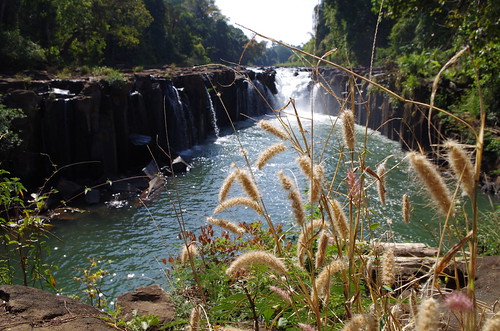
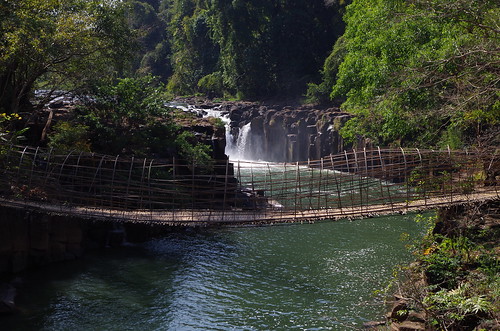

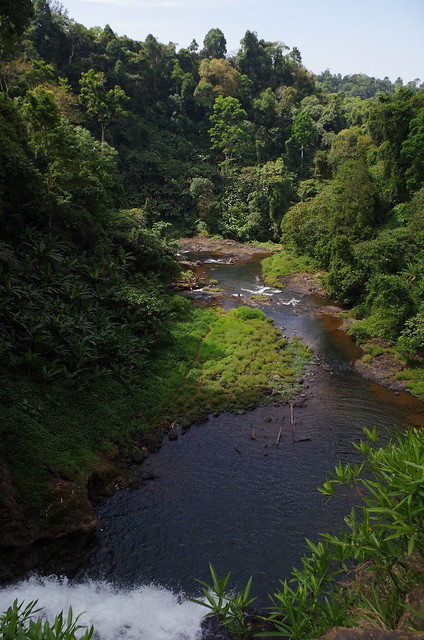

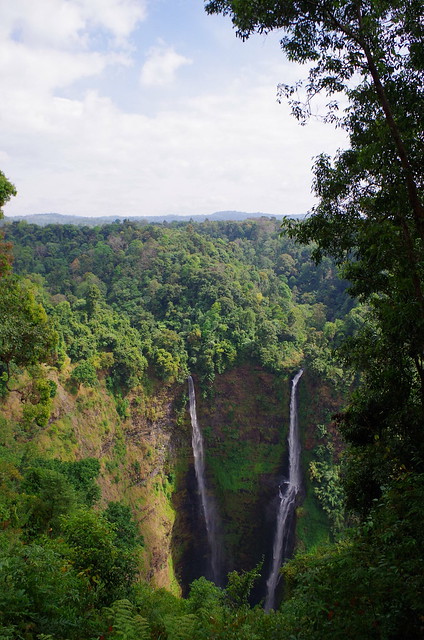
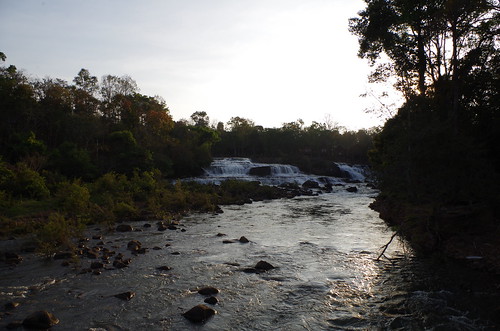
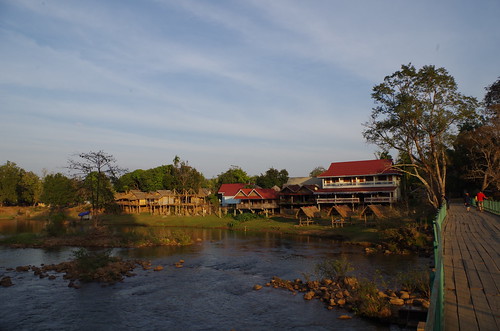
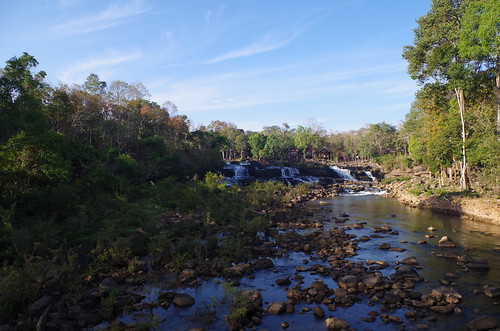
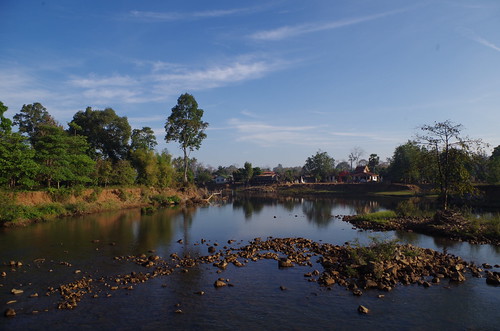
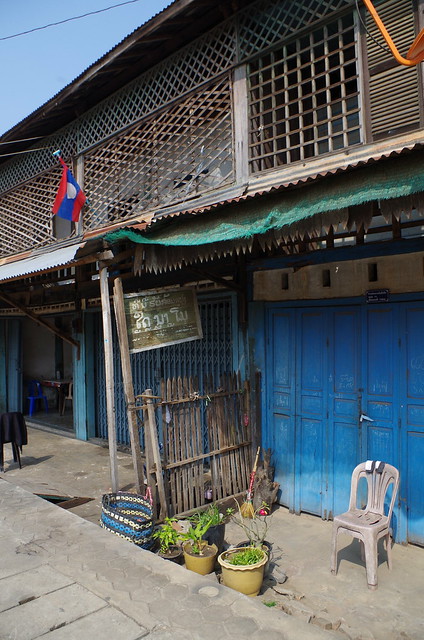
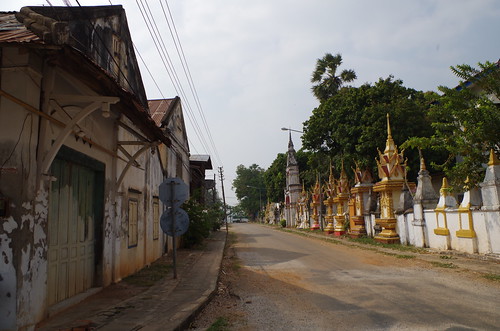
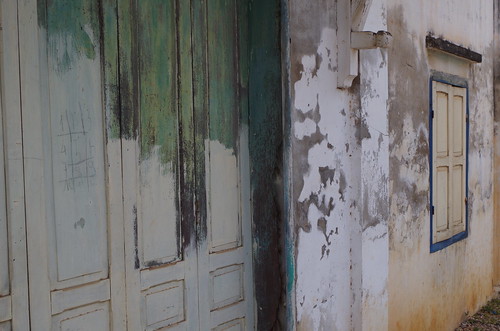
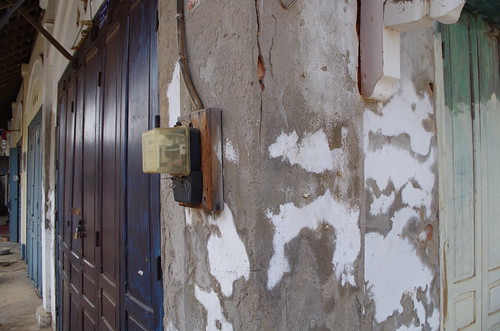
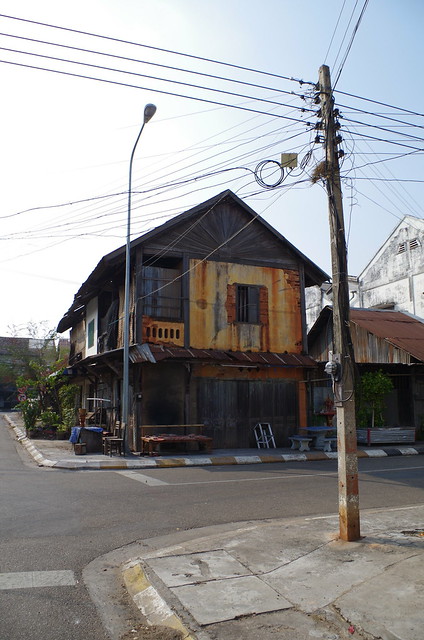
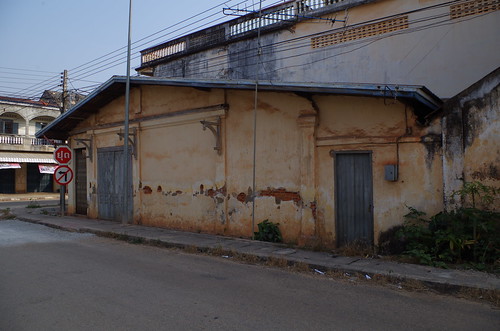
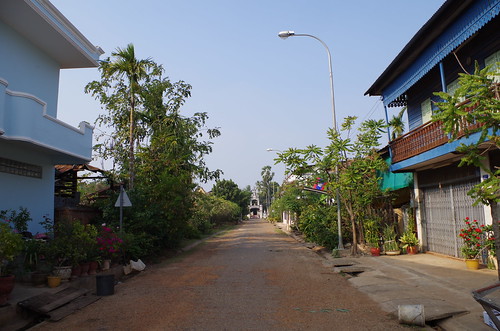
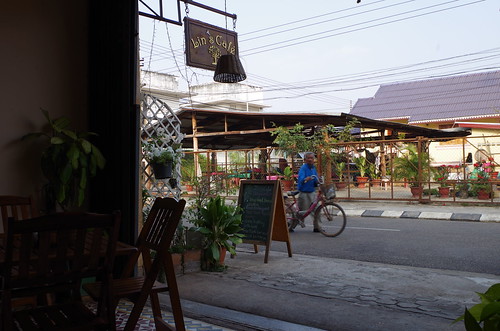
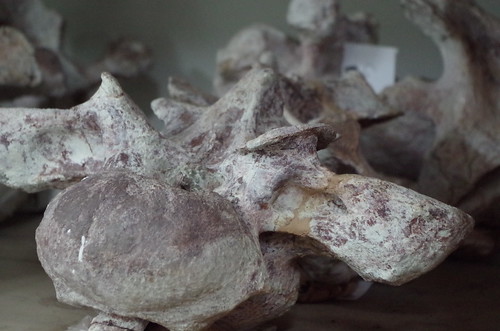
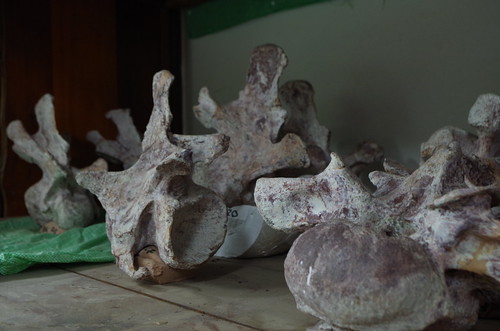
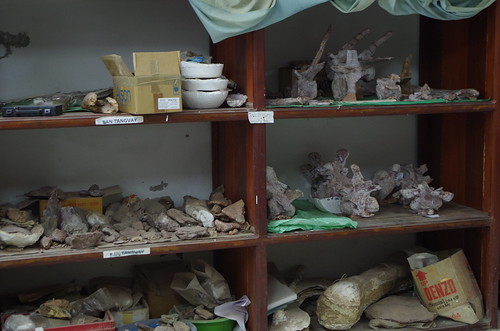
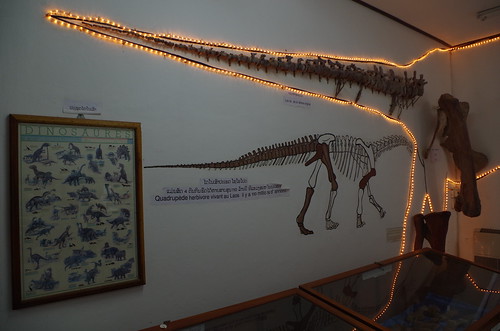
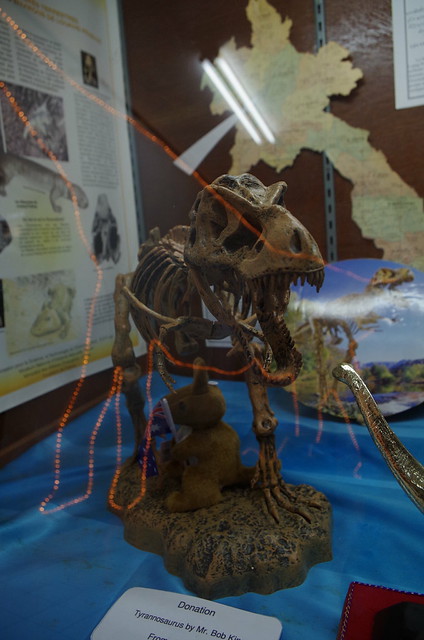
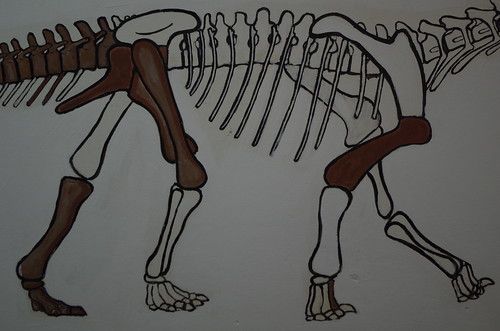
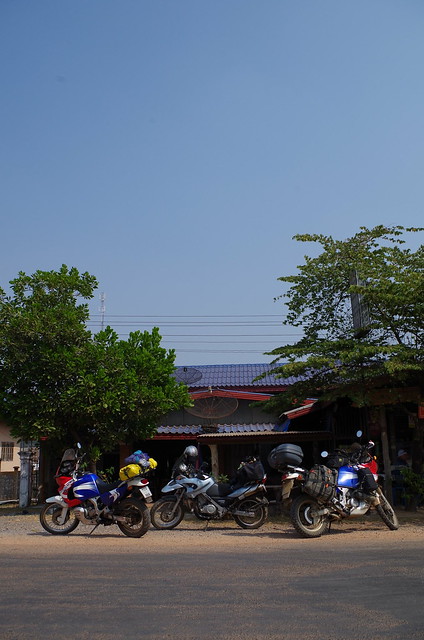
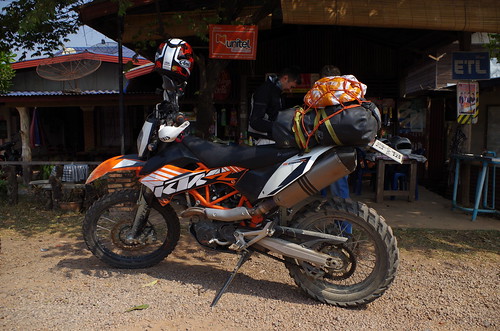
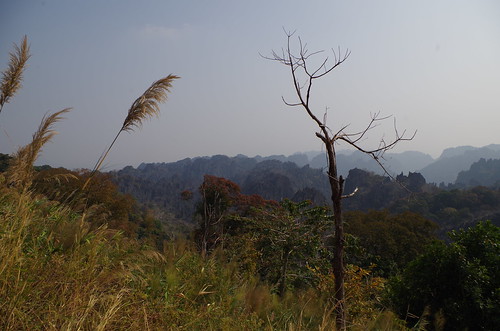
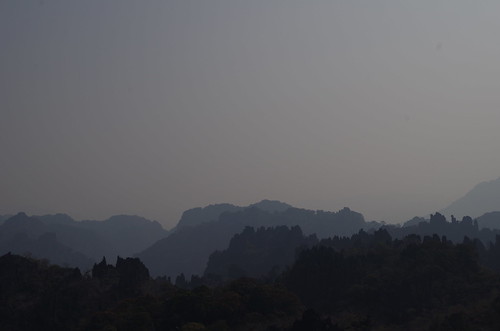

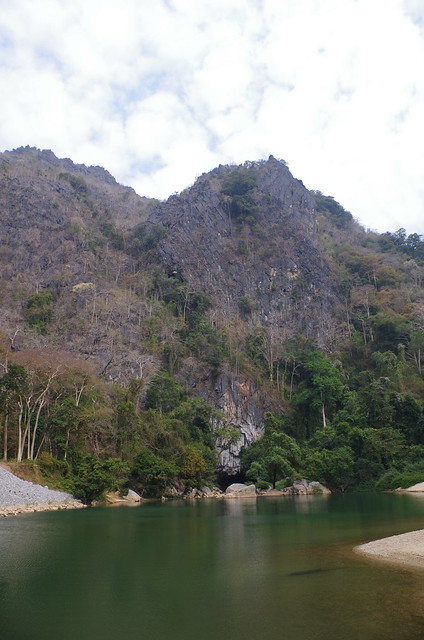
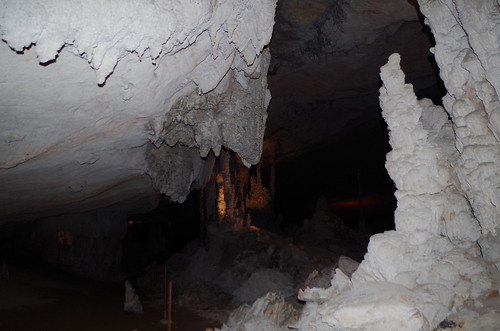
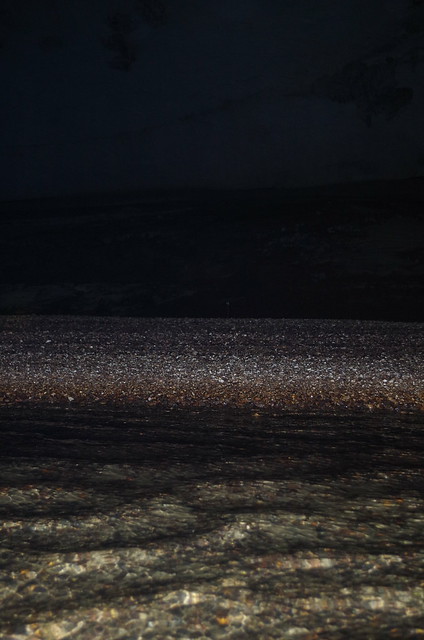
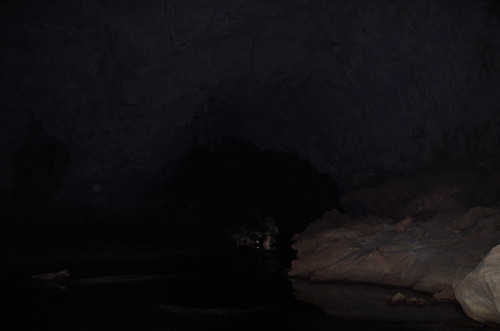
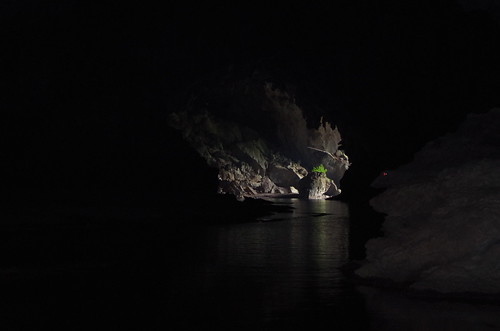
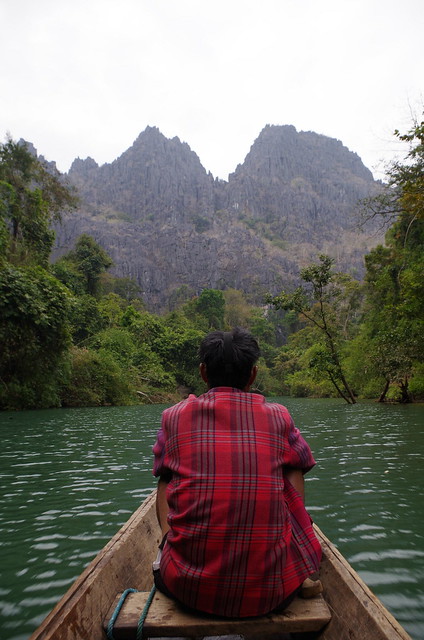
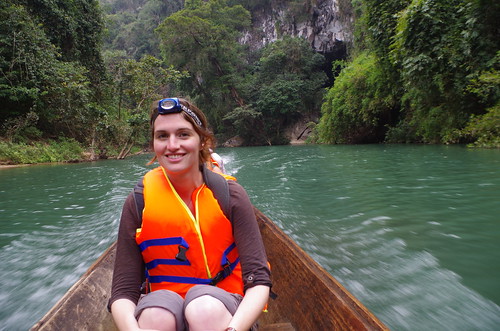
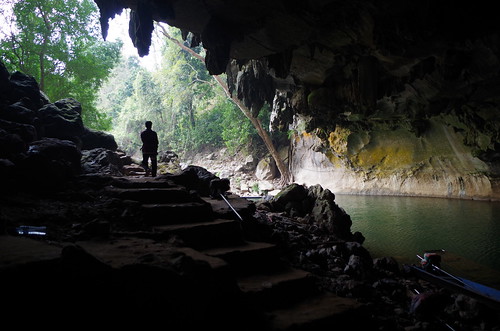
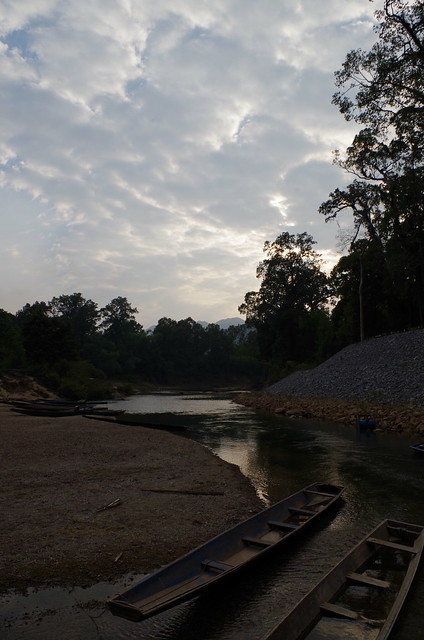
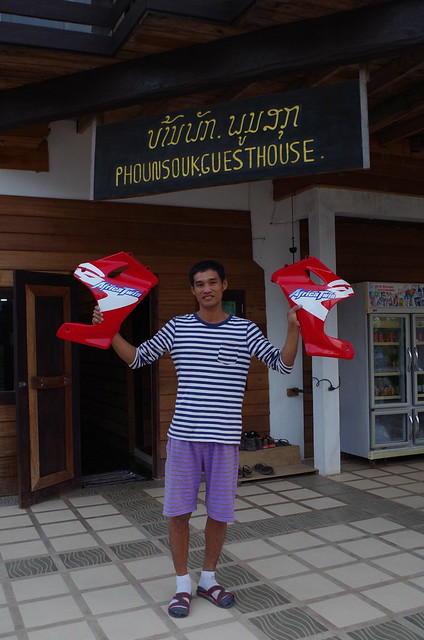
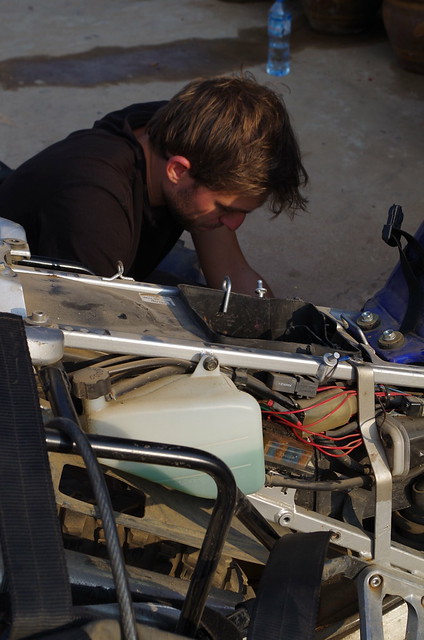
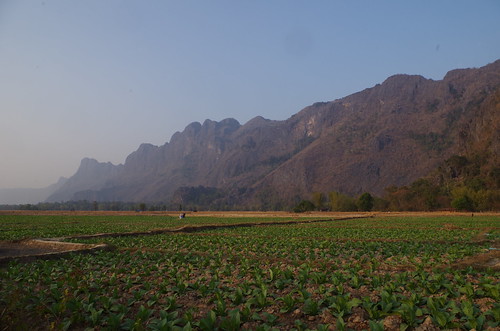
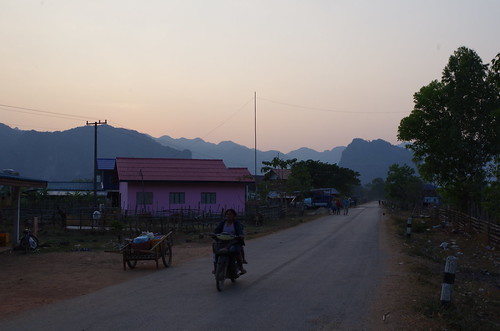
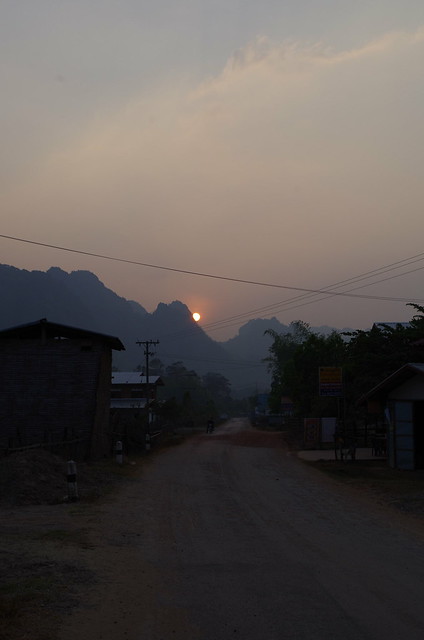


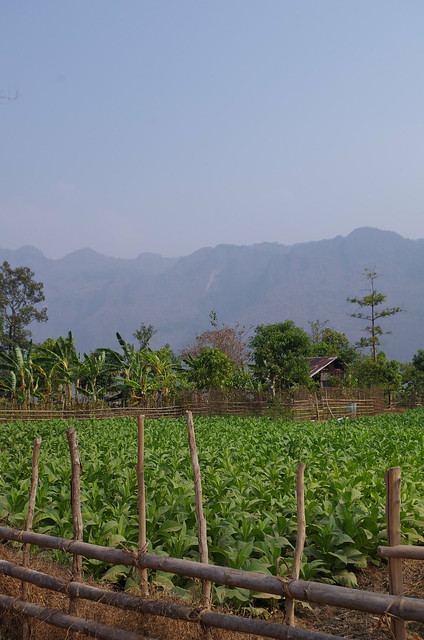
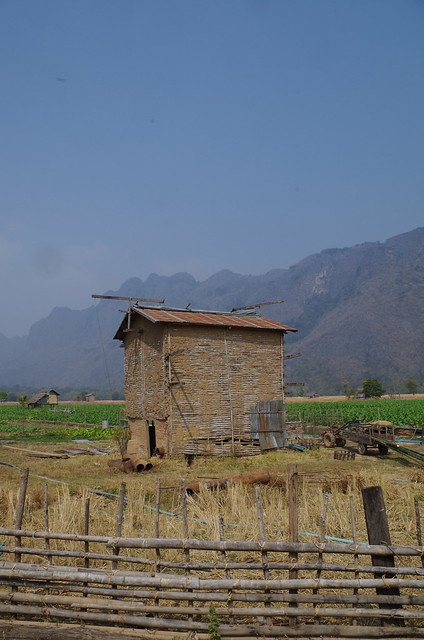
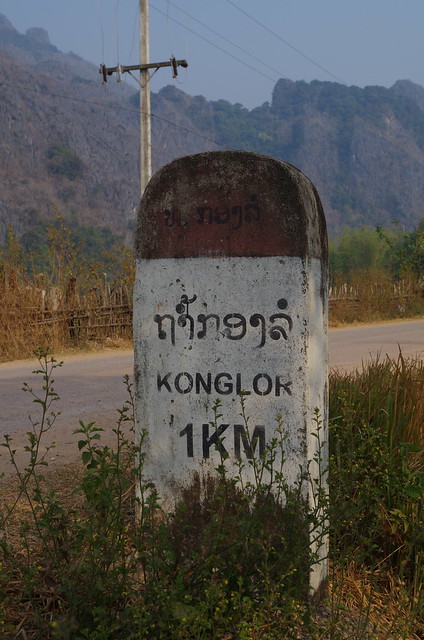
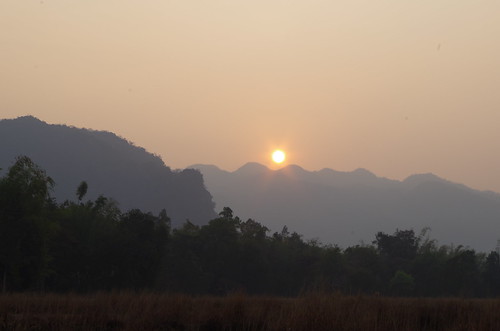
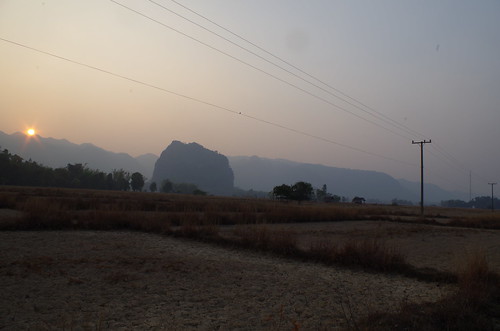
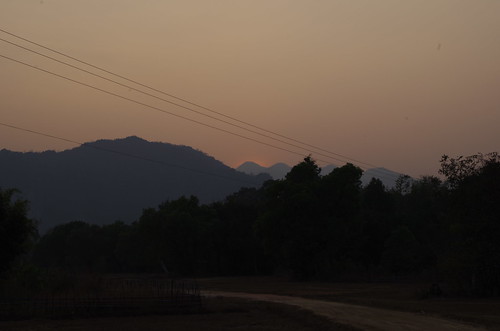
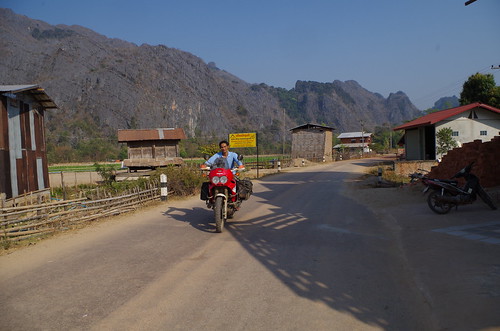
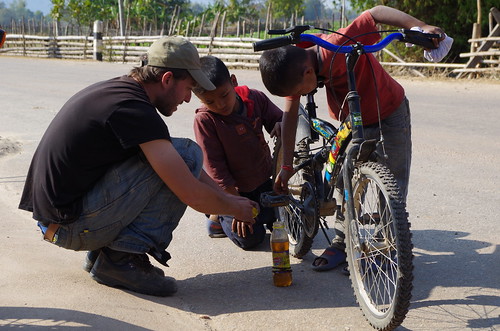
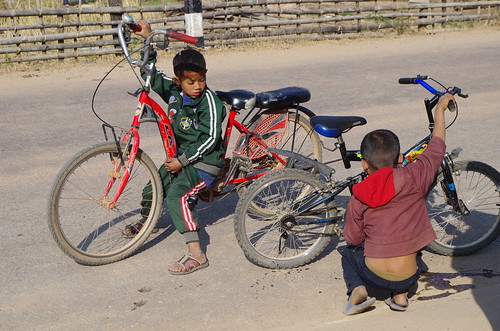

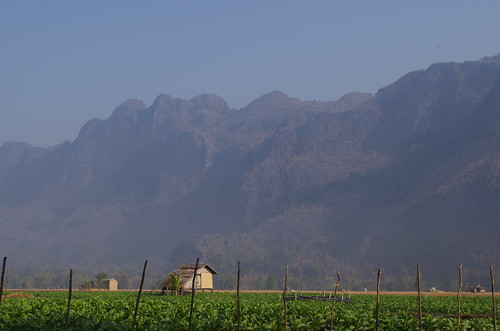
No comments:
Post a Comment